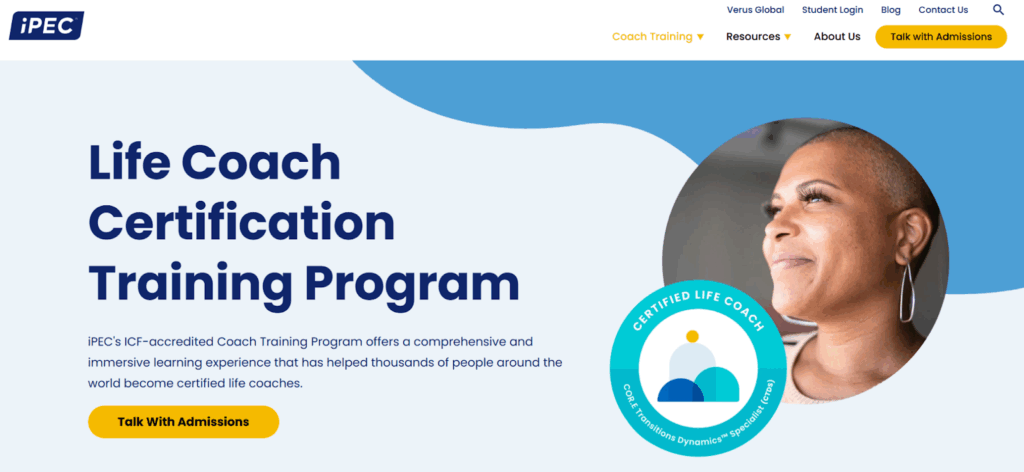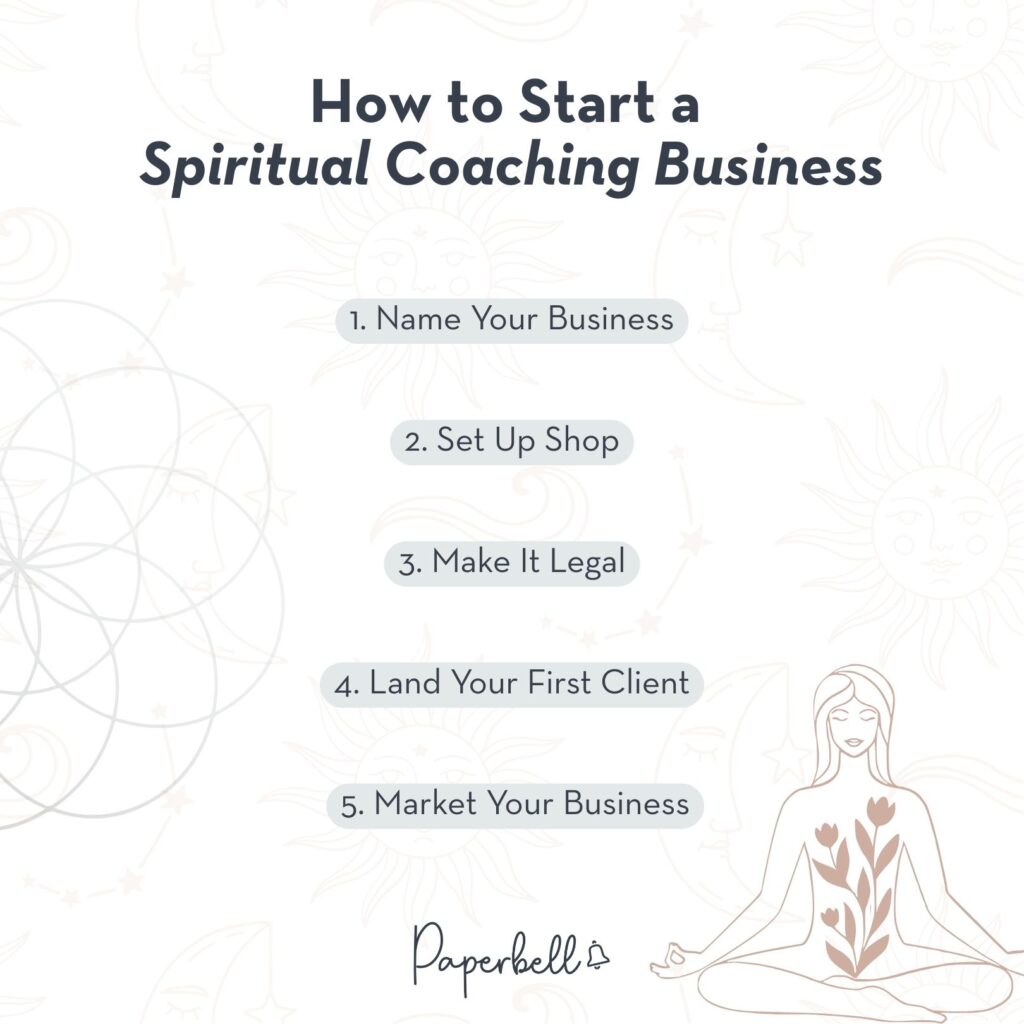A spiritual coach helps people connect with their deeper purpose, navigate life transitions, and align their goals with their values and beliefs. Unlike general life coaching, this approach integrates personal growth with spiritual awareness, whether that means mindfulness, energy work, or faith-based practices.
If you feel called to guide others on this path, here’s a step-by-step look at how to become a spiritual coach and build a business that supports both your clients’ transformation and your own.
Why Become a Spiritual Life Coach?
Spiritual coaching offers more than just a career: it’s a calling to support people as they search for meaning, clarity, and connection.
By guiding clients through practices that deepen self-awareness, you help them create shifts that ripple across every area of their lives, whether that’s:
- Someone going through a major life transition and feeling unsure of their next step
- A professional struggling with stress or burnout who wants to reconnect with their deeper purpose
- An entrepreneur seeking more balance between success and fulfillment
- A person healing from past experiences and wanting to build confidence in their future
- Anyone who simply feels “stuck” and is searching for greater peace and clarity
For many coaches, the work is equally transformative on a personal level. You’ll not only witness breakthroughs in your clients but also expand your own spiritual practice, communication skills, and sense of purpose. It’s a path that blends professional fulfillment with personal growth.
How to Become a Spiritual Coach
1. Choose Your Spiritual Coaching Niche.
While you can work as a general spiritual life coach, narrowing your focus will make you much more appealing to your ideal clients.
Think about it: A financial coach who specializes in retirement planning is more likely to attract clients nearing retirement than a coach who just says they “help with money.”
The same applies to spiritual coaching: Specialists may not work with everyone, but they’re the best fit for the people they’re meant to serve.
You can define your niche in many ways, such as:
- The age group, life stage, or backgrounds you serve
- A particular spiritual tradition or belief system
- Specific goals clients want to reach (peace, purpose, alignment, etc.)
- Common challenges clients face (confusion about beliefs, difficulty trusting intuition, spiritual burnout, etc.)
If you’re unsure where to start, look to your own journey. The challenges you’ve faced and the breakthroughs you’ve had often point to the clients you’re most equipped to help.

Some examples of spiritual coaching niches include:
- Embodiment Coach
- Divine Feminine Coach
- Energy Healing Coach
- Intuitive Awakening Coach
- Buddhist/Christian/Muslim Life Coach
- Tantric Coach
If you’re not ready to define your exact niche yet, you can begin broad and gradually refine it as you gain clarity.
Pro tip: To become a spiritual coach, you’ll need a professional system to run your business. Paperbell handles your scheduling, payments, website, client materials, and contracts so you can focus on coaching, not admin.
2. Develop Your Coaching Process.
Once you’ve chosen a niche, the next step is defining how you’ll work with clients.
- What transformation do you want them to experience?
- What steps will guide them there?
- What should a session with you feel like?
Your unique process is what sets you apart from other spiritual coaches. While it may share similarities with others, it should reflect your own journey, values, and spiritual perspective.
Some coaches focus mainly on powerful questioning and conversation frameworks. Others incorporate practices such as meditation, creative visualization, energy healing, or journaling prompts. What matters most is using tools that you truly believe in and that create the greatest impact for your clients.
To design an effective coaching process, clarifying your coaching style and coaching plan are great starting points. If these concepts are new to you, pursuing a life coach certification can give you a strong foundation.
3. Create Coaching Packages.
While you could offer single sessions on an as-needed basis, coaching packages are often a better way to create real transformation. A spiritual coaching package centers around a specific outcome and typically includes a set number of sessions plus additional support, such as:
- Email or message support between sessions
- Guided practices or meditations
- PDF resources or journaling prompts
A comprehensive spiritual coaching program encourages clients to commit to the process and gives them the time needed to see lasting results, something especially important in spiritual work.
How to Get Certified as a Spiritual Life Coach
While certifications aren’t mandatory in the coaching industry, many professionals choose to pursue one to build credibility, refine their skills, and feel more confident in serving clients.

Becoming a certified spiritual life coach typically involves:
- Choosing a program: Research institutions that align with your values, goals, and approach to spirituality.
- Completing the training: Programs can range from a few weeks to a year or more, depending on their depth and focus.
- Meeting requirements: This may include practice coaching hours, written assignments, or supervised sessions.
- Earning your credential: Once complete, you can apply for a program-specific credential and add it to your bio, website, and coaching materials.
Some well-known spiritual coaching certification programs to explore include:
- World Coach Institute: Spiritual Coach Certification
- Center for Transformational Coaching: Deep Coaching Intensive
- Life Purpose Institute: Spiritual Coach Certification
- Psychosynthesis Coaching: Life Coach & Leadership Certification
Each program varies in scope and philosophy, so make sure you compare the instructors, content, and schedule of each before you sign up.
How to Start a Spiritual Coaching Business

Starting a spiritual coaching practice isn’t just about getting a certificate and waiting for clients to show up. You’ll need to set up a business foundation, create systems that support your work, and start connecting with the people you want to serve. Here’s what that looks like in practice.
1. Name Your Business.
A strong brand name signals to potential clients what you’re about. It reflects your mission and the kind of transformation you help them achieve. You have two main options:
- Use your own name: Simple, flexible, and easy to build a personal brand around. Great if you’re just starting out and want to leave room to evolve.
- Create a business name: For example, Sacred Path Coaching or Awaken with [Your Name]. These resonate with clients looking for transformation in a specific area.
Bonus tip: Check that the domain name and social handles are available before finalizing.
2. Set Up Shop.
You don’t need all the bells and whistles to start providing coaching services, but you do need a system that makes managing clients easy.
At a minimum, this includes:
- A way for clients to book sessions without back-and-forth emails
- A reliable system for contracts and payments
- A page that explains who you help and how to get started
Instead of juggling different tools, Paperbell combines all of this for you:
A fill-in-the-blank website, scheduling, contracts, payments, forms, and even automated client emails. It’s built for coaches, so they can skip the tech headaches and focus on their work.
3. Make It Legal.
Business owners have a few legal requirements that employees don’t. For instance, you’ll need to register your business.
As a coach operating alone, you have two options to choose from:
- Sole proprietorship: This is the simplest and cheapest way to register a coaching business. Sole proprietors are liable for their businesses if they get sued. You can still register a name other than your own by opting for DBA (doing business as).
- Limited liability company (LLC): These businesses exist as separate entities from their owners. It costs more, but you’ll be safer since you’re not personally liable for what happens in your business.
You also need to ensure that you have a contract in place before onboarding your first client. This is to ensure that you and your client are clear on what you agree to, down to the nitty-gritty details. It also lets you set your own terms for delivering your coaching services (including your cancellation and payment policy).
Beyond a contract, you can opt for coaching insurance to protect yourself from any unforeseen incidents or, in the worst case, lawsuits.
4. Land Your First Client.
Getting your first paying client is the milestone that turns coaching from a career aspiration into a real business. It validates your offer, gives you practical experience, and often helps you land your first testimonial.
Here are a few ways to get your first spiritual coaching clients:
- Tap into your network: Friends, family, and colleagues may know someone looking for support. Personal referrals are often the warmest leads you’ll ever get.
- Show up where your audience hangs out: This could mean spiritual or personal development Facebook groups, online forums, or local meetups. Contribute genuinely before promoting your services.
- Pitch your voice: Guest appearances on podcasts, blogs, or online summits put you in front of aligned audiences and position you as an expert.
- Leverage directories: Sites like CoachCompare list your services where people are actively searching for coaches.
- Ask for referrals: If your first client has a great experience, invite them to share your work with someone else who might benefit.
Your first client is often the hardest to land, but once you do, you’ll have momentum and social proof to keep going.
5. Market Your Business.
Once you’ve worked with your first client, the next step is creating a steady stream of opportunities. Referrals are wonderful, but you’ll need an intentional marketing system to keep your practice sustainable.
Here are a few proven channels to explore:
- Blogging and SEO: Write helpful content that answers your ideal client’s questions and draws them to your website.
- Pinterest: A surprisingly powerful platform for coaching, since it acts like a search engine for personal growth topics.
- Social media: Share insights, behind-the-scenes glimpses, and client wins (anonymously or with permission) to build connection.
- Paid ads: Facebook or Instagram ads can amplify your reach once you’ve nailed your messaging.
You don’t have to do everything at once. Choose one channel, commit to it, and refine your strategy as you go. Consistency, more than quantity, is what builds long-term visibility.
How Much Do Spiritual Coaches Make?
Your income as a spiritual coach can fluctuate wildly. How much you can make will depend on:
- Your credibility and level of experience
- How well you position yourself in the market
- Where your clients are located
- Your business model and offers
As a baseline, you can expect to charge at least $60 to $120 per session as a beginner. But there’s no cap on how much you can make, especially if you implement group coaching into your business model.
FAQ
What Do I Need to Become a Spiritual Coach?
No formal degree is required, but you can get certified if you choose to. You’ll also need strong listening skills, empathy, and a clear process to guide clients on their spiritual journey, plus coaching tools to run your practice.
Do Spiritual Coaches Make Money?
Yes, many work as successful spiritual life coaches, earning a full-time income. Your revenue will depend on your niche, pricing, and consistency in attracting and retaining clients.
How Long Does It Take to Become a Spiritual Counselor?
Some start coaching right away, while others pursue certifications that take months to years. It depends on your chosen path and training.
Build Your Spiritual Coaching Practice with Confidence
If guiding others on their path feels like your purpose, spiritual coaching can be both deeply meaningful and financially sustainable. The key is having the right structure behind you.
Paperbell gives you everything in one place: scheduling, payments, contracts, and a professional coaching website so you can focus on serving your clients instead of juggling tech. It’s free with your first client.

Editor’s Note: This post was originally published in November 2023 and has since been updated for accuracy.









